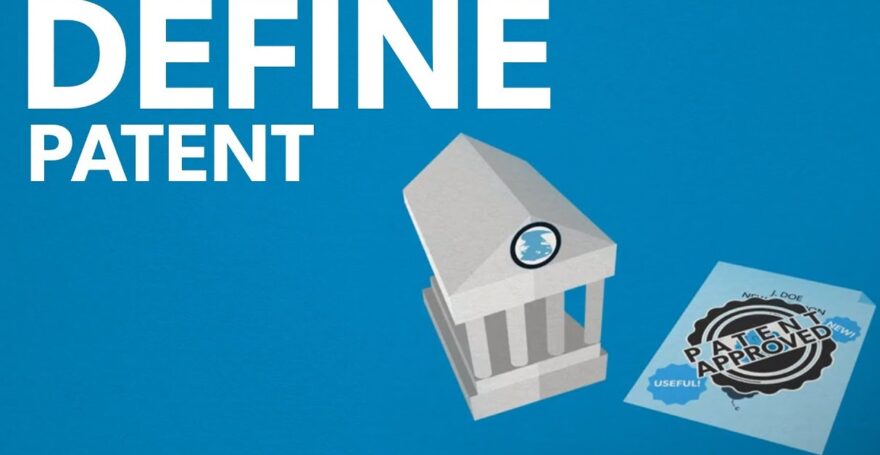In the realm of innovation, the conception of novel ideas can be exhilarating. However, it is essential to secure your intellectual property before sharing your ingenuity with the world. This is where the patent process becomes imperative. We will provide a comprehensive guide on navigating the process, catering specifically to those who are embarking on this journey for the first time.
Defining Patents

Patents constitute the foundational cornerstone of the entire process. At its essence, it represents a legally binding instrument. It serves as the guardian of an inventor’s creative brainchild, endowing them with a set of exclusive privileges, which are not dissimilar to a citadel fortified against the encroachment of rival innovators.
It operates as an official imprimatur that confers an array of formidable prerogatives upon its holder. These privileges encompass the sacrosanct realms of creation, production, and dissemination. When an inventor successfully secures a patent, they are vested with the singular authority to fabricate, operate, and disseminate their groundbreaking invention.
The duration of this exclusivity varies depending on the type, but the essence remains the same: an inventor is afforded a safeguarded window of opportunity to advance their creation, recoup their investments, and contribute to the betterment of society without undue competition. But you should definitely check this and find out about exact duration.
In essence, it is the embodiment of the age-old principle of intellectual property rights. It epitomizes the concept of rewarding innovation by providing inventors with a temporal haven in which they can reap the benefits of their ingenuity and transform their ideas into tangible contributions to the world.
Types

These patent categories serve as specialized vessels through which inventors can secure the protection and recognition their creations deserve. We will give you additional info about each.
- Utility Patents: These stalwarts of the patent world are specifically designed to encapsulate the functionality and operational aspects of an invention. In essence, they are akin to the backbone of the patent system, safeguarding the inner workings of creations. They are a broad category that encompasses a multitude of innovations, including processes, machines, and compositions of matter. They are the go-to choice for inventors seeking to secure exclusive rights to the fundamental mechanisms and utility of their creations.
- Design Patents: In contrast to their utilitarian counterparts, design ones pivot towards the aesthetics of an invention. They offer a protective shield that is finely tuned to the ornamental characteristics that make an invention visually distinctive. These patents are like the custodians of an invention’s visual allure, ensuring that its unique design elements remain shielded from imitation.
- Plant Patents: They cater to the realm of horticulture and agriculture. They are tailored to protect new plant varieties that have been cultivated through human intervention. In essence, they serve as the guardians of novel plant species that have been carefully bred to exhibit specific characteristics.
Each of these patent categories represents a distinct niche within the vast landscape of invention.
Assessing Uniqueness

Prior to embarking on the patent journey, it is crucial to ascertain the uniqueness of your invention. Has anyone treaded upon this path before? A thorough search is akin to surveying the landscape to ensure you’re charting new territory.
Market Demand Analysis
An essential aspect of this assessment is determining whether there is a demand for your invention. Before investing significant time and resources into the patent process, you must contemplate whether there is a viable market for your creation.
The Application Journey
The process of applying involves several meticulous steps. It’s not some unimportant job you can do in a blink of an eye. If you really want to finish this process with success, you need to go into every detail. Each of these steps is crucial in ensuring the success of your application:
- Detailed Description: Provide a comprehensive and precise description of your invention.
- Completing the Application: Accurately fill out the application, ensuring all necessary details are included.
- Financial Obligations: Be prepared to meet the required fees associated with the application.
- Consider Legal Assistance: Depending on the complexity of your invention, it may be advisable to seek the expertise of a attorney.
Precision is Key
When venturing into the application process, precision is paramount. Errors or omissions in your application can have adverse consequences on the outcome. Thus, meticulous attention to detail is non-negotiable.
The Examiners’ Vigilance

Patent examiners play a pivotal role in the process. They meticulously scrutinize applications to identify prior inventions or similar concepts. Their diligence ensures that patented creations are indeed unique.
Navigating Examiner Feedback
Receiving feedback from examiners is not unusual. In fact, it’s part of the process. This feedback can be constructive, guiding you toward refining your invention to meet the standards.
Sustaining Your Patent
Securing it is not a one-time achievement but an ongoing commitment. To maintain your patent’s validity, you must fulfill certain obligations, such as paying maintenance fees and adhering to deadlines.
Enforcement Measures
Should someone infringe upon your rights, legal remedies are available. Your patent functions as a legal shield, allowing you to protect your intellectual property through litigation if necessary.
Exploring Alternatives
While patents offer robust protection, they may not be suitable for every invention. In such cases, exploring alternatives like trade secrets or copyrights may provide more appropriate safeguards.
Financial Prudence
Managing the costs associated with the process can be challenging. To mitigate these financial challenges, consider the following strategies:
- Utilize online resources judiciously.
- Seek assistance from inventor organizations.
- Develop a well-thought-out budget.
- Explore pro bono patent services where available.
Conclusion

The process is a vital aspect of bringing your invention to life while safeguarding your intellectual property. It may seem intricate, but with meticulous research, precision, and perhaps some professional guidance, you can navigate it successfully. Remember that a patent is not just a legal document; it’s a testament to your innovation and a shield against intellectual property theft. So, are you ready to embark on this journey and protect your groundbreaking ideas? The world awaits your innovations with eager anticipation.







